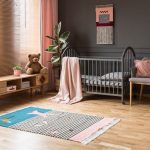Finding the best diaper for your baby isn’t just about convenience—it’s about keeping your child dry, comfortable, and rash-free. With so many brands, features, and materials available, choosing the right diaper can feel overwhelming for new parents.
The ideal diaper balances absorbency, softness, fit, and skin-friendliness. Whether you’re changing a newborn every two hours or managing a busy toddler on the move, the right diaper can make daily routines smoother for both you and your baby. Here’s what to look for when choosing diapers that truly deliver on comfort and absorbency.
1. Understand the Different Types of Diapers
Before diving into features and materials, it’s helpful to know the main types of diapers available on the market.
Disposable Diapers
-
Most widely used
-
Designed for single use
-
Offer strong absorbency and convenience
-
Typically include elastic waistbands and leak guards
Cloth Diapers
-
Reusable and eco-friendly
-
Made from cotton, bamboo, or microfiber
-
Require more effort to clean and maintain
-
Cost-effective over time and gentler on sensitive skin
Biodegradable or Eco-Friendly Disposables
-
Made from plant-based or compostable materials
-
Free from many synthetic chemicals
-
Better for the environment, but sometimes pricier
Each diaper type comes with pros and cons. Your lifestyle, values, and routine will help determine the best choice for your family.
2. Prioritize Absorbency First
One of the most important diaper qualities is how well it absorbs moisture and keeps it away from your baby’s skin.
Why Absorbency Matters:
-
Prevents diaper rash and irritation
-
Keeps baby dry overnight
-
Reduces the need for frequent changes
High-absorbency diapers usually have a multi-layer core and superabsorbent polymers (SAPs) that trap moisture. For overnight use, consider diapers marketed specifically for extended wear or heavy wetters.
3. Comfort Depends on Fit and Material
A diaper that leaks or leaves red marks isn’t doing its job. Comfort is closely tied to how well the diaper fits and how soft the materials are against your baby’s skin.
Key Comfort Features:
-
Stretchy waistbands and leg cuffs for a snug but gentle fit
-
Breathable materials to promote airflow
-
Soft inner liners to reduce chafing
-
Flexible design that moves with your baby
Ill-fitting diapers can cause leaks, blowouts, and discomfort, especially as your baby starts rolling, crawling, or walking.
4. Check for Skin-Friendly Ingredients
Babies have sensitive skin, and diapers are in contact with it almost 24/7.
Look For:
-
Fragrance-free, dye-free options
-
Hypoallergenic labels
-
Diapers free of chlorine, latex, parabens, and phthalates
Babies prone to rashes or eczema may benefit from diapers designed specifically for sensitive skin. Always test new brands gradually and monitor for any reactions.
5. Consider Diaper Size and Weight Ranges
Diapers are sized by weight, not age, so checking the manufacturer’s sizing guide is essential.
General Size Guide:
-
Newborn: Up to 10 lbs
-
Size 1: 8–14 lbs
-
Size 2: 12–18 lbs
-
Size 3: 16–28 lbs
-
Size 4 and up: For toddlers and active babies
Don’t hesitate to move up a size if you notice leaks, red marks, or difficulty fastening the diaper. Some brands also offer “between” sizes or slim fits for smaller babies.
6. Don’t Overlook Leak Protection Features
Leaks are one of the biggest frustrations for parents—and one of the easiest to solve with the right diaper features.
Effective Leak Guards Include:
-
Leg cuffs that hug the thighs securely
-
High-rise backs for better containment
-
Elastic waistband for active babies
-
Double barriers or dual-layer cores
Overnight diapers often include extra absorbency in specific zones to prevent leaks while your baby sleeps.
7. Factor in Cost and Value
Cost per diaper adds up fast—especially during the first few months when babies go through 8 to 12 diapers a day.
Tips for Managing Costs:
-
Buy in bulk to reduce cost per diaper
-
Sign up for subscription services or store loyalty programs
-
Consider using cloth part-time to reduce waste and spending
Some premium diapers cost more upfront but offer better absorbency and fewer leaks, reducing the number of daily changes.
8. Pay Attention to Wetness Indicators and Extras
Small features can make a big difference in day-to-day diapering.
Helpful Extras Include:
-
Wetness indicators: Lines that change color when the diaper is wet
-
Velcro tabs: Easier to fasten and adjust than sticky tape
-
Contoured shapes: Offer better fit around the legs and waist
-
Cute designs: Not necessary, but a fun bonus for many parents
While not essential, these features add convenience and help streamline diaper changes—especially for new or sleep-deprived parents.
9. Read Reviews and Try Multiple Brands
No diaper works perfectly for every baby. Body shapes, sensitivities, and activity levels vary widely, so don’t be afraid to test a few brands.
What to Look for in Reviews:
-
Real-world absorbency and leak performance
-
Comfort and fit for different body types
-
Ease of use and changing
-
Skin sensitivity or rash experiences
Many parents try a few sample packs or purchase smaller sizes before committing to bulk buys.
10. Consider Special Diapering Needs
Certain situations may call for specialty diapers that go beyond the standard options.
Specialty Options Include:
-
Preemie diapers: For babies under 6 lbs
-
Overnight diapers: Designed for extended wear and better absorbency
-
Training pants: For toddlers transitioning to potty training
-
Pull-up diapers: Help encourage independence in older toddlers
If your baby has medical needs or you’re managing multiple children in diapers, it’s worth looking into highly specialized or niche diaper brands.
Pro Tips for Easier Diapering
-
Change frequently: Even the best diaper can’t prevent discomfort if it’s left on too long.
-
Use a barrier cream: Helps protect against rashes, especially during teething or illness.
-
Keep spares everywhere: Diaper bags, cars, bedrooms—all should have a few extras on hand.
-
Pay attention to signs: Frequent leaks or blowouts usually signal it’s time to size up or try a different brand.
Choosing the right diaper is a personal process, but once you find one that works, it makes daily life a whole lot easier.



